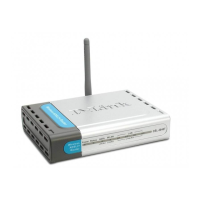
Do you have a question about the D-Link DSL-2640T and is the answer not in the manual?
| Device Type | Wireless Router |
|---|---|
| Wireless Data Rates | Up to 54 Mbps |
| Wireless Speed | 54 Mbps |
| Frequency Band | 2.4 GHz |
| Security | WEP, WPA, WPA2 |
| Ethernet Ports | 4 |
| WAN Port | 1 |
| Antenna | External |
| Antennas | 1 |
| Humidity | 10% to 90% non-condensing |
| Standards | IEEE 802.11g, IEEE 802.11b, IEEE 802.3, IEEE 802.3u |
| Wireless Standard | 802.11g |
| Operating Temperature | 0 to 40 °C |
| Storage Temperature | -20°C to 70°C |
| Ports | 4 x 10/100 Mbps Ethernet LAN ports, 1 x 10/100 Mbps WAN port |
Steps to install the router.
Guide for configuring the router using a wizard.
List of items included in the router package.
Important notes before starting router installation.
Overview of the router's function and design.
Details on the router's wireless capabilities.
Explanation of ADSL technology used by the router.
List of key features and advantages of the DSL-2640T.
Overview of the router's front panel LED indicators.
Instructions for connecting ADSL and Ethernet cables.
How to reset the router to its factory default settings.
How to configure your computer's IP for router access.
How to log in to the router's web management interface.
Using the setup wizard for initial router configuration steps.
How to configure the router for bridged ADSL connections.
Setting up a dynamic IP connection for internet access.
Configuring a static IP address for the WAN connection.
Setting up PPPoE or PPPoA internet connection types.
Allowing or denying wireless access based on MAC addresses.
Enabling and configuring multiple SSIDs for wireless networks.
Setting up WDS for interconnecting access points.
Manage system password, remote access, and login settings.
Setting and synchronizing the router's system time.
Setting up logging to remote servers for event tracking.
Saving, loading configurations, and restoring factory defaults.
Loading the latest firmware for the router.
Performing ping tests and configuring IGMP proxy.
Running tests to diagnose router connectivity and hardware.
Viewing basic LAN/WAN interface and device information.
Checking ADSL connection status for troubleshooting.
Specifications for ADSL and ADSL2 standards.
Specifications for the router's wireless standards and performance.
Steps to set up Windows XP for automatic IP acquisition.
Steps to set up Windows 2000 for automatic IP acquisition.
Steps for Windows 95/98 to obtain IP addresses automatically.
Description and diagram of in-line low pass filter installation.